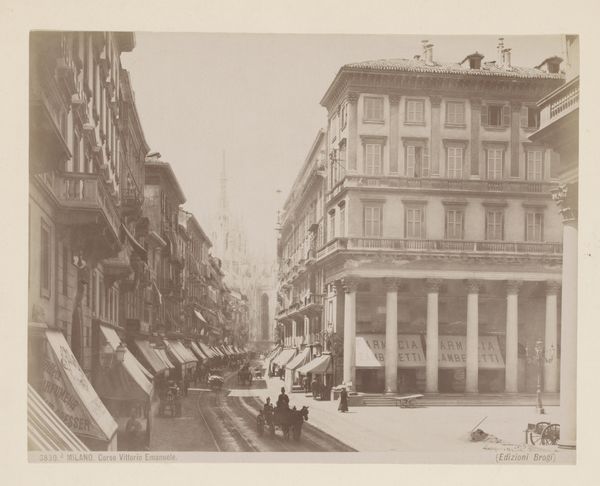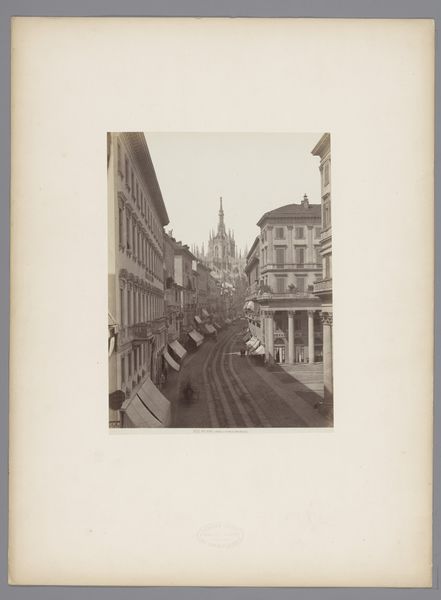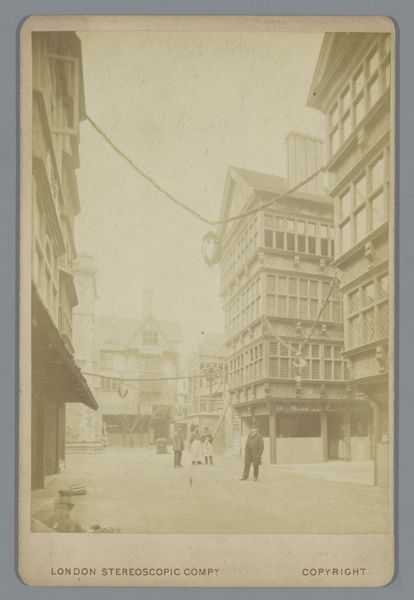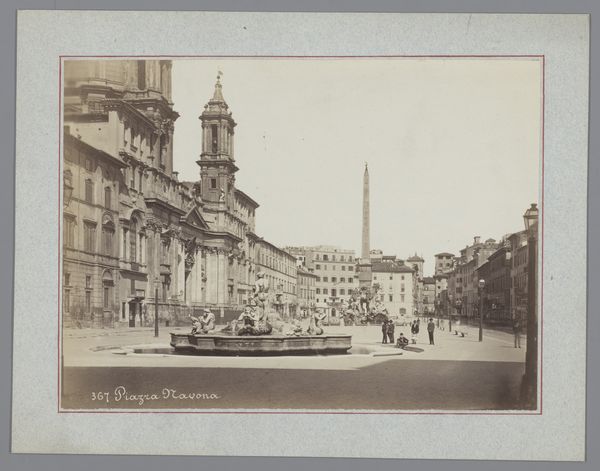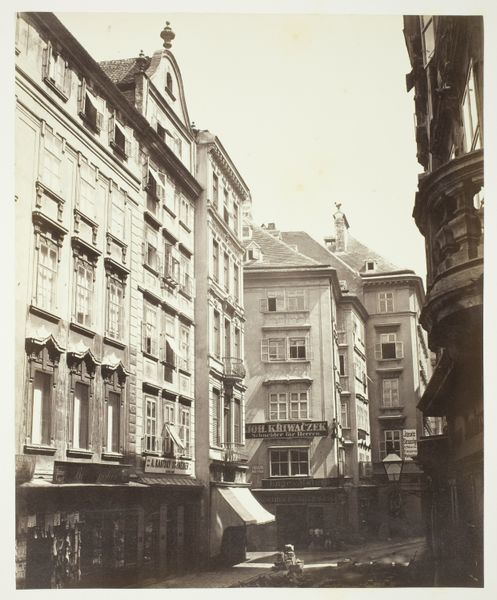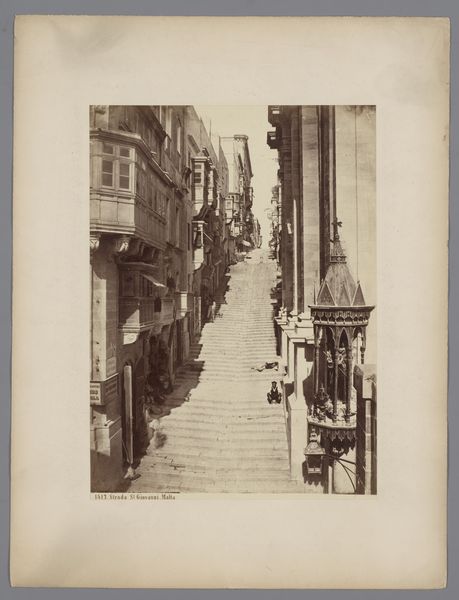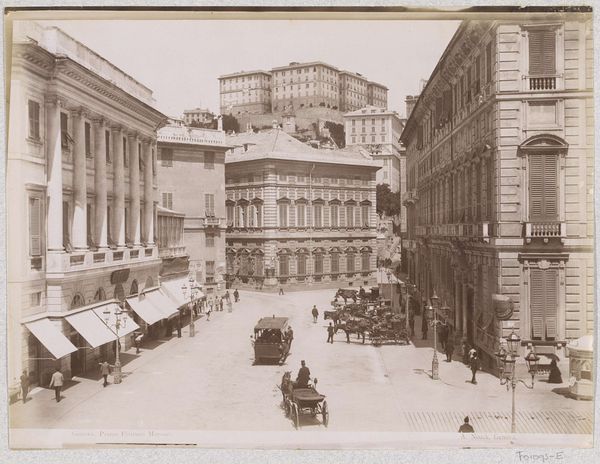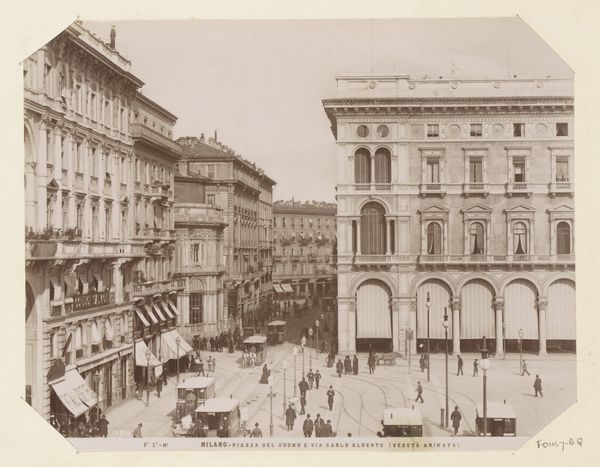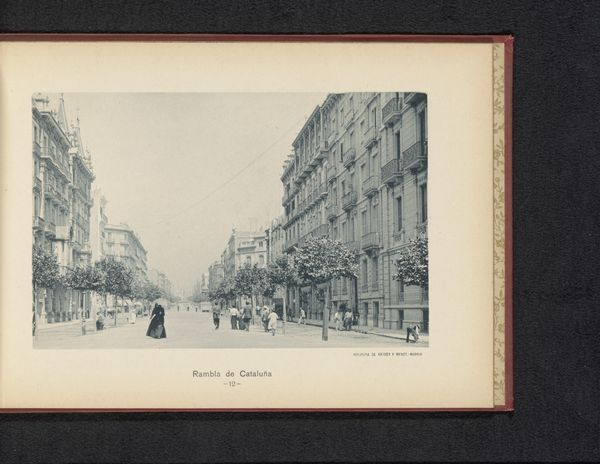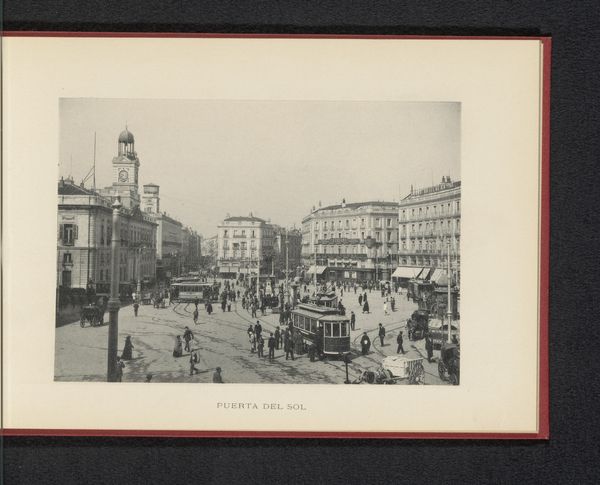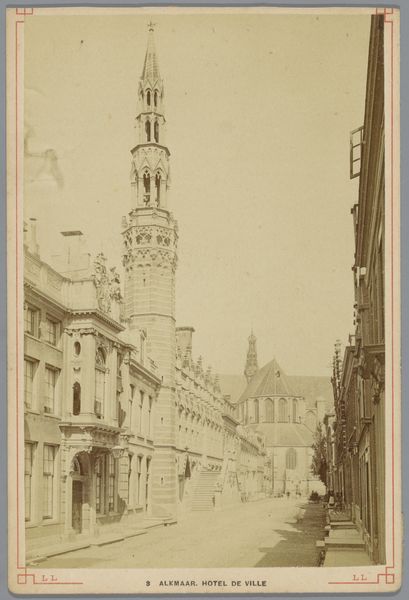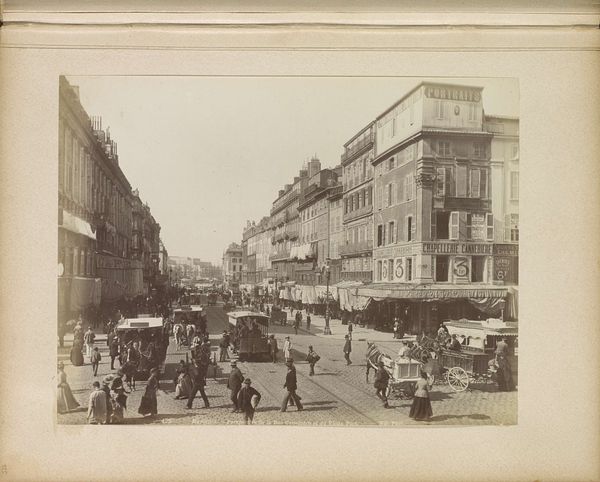
photography
#
photography
#
cityscape
#
italian-renaissance
#
street
Dimensions: height 330 mm, width 243 mm
Copyright: Rijks Museum: Open Domain
Editor: We're looking at "Gezicht op de Corso Vittorio Emanuele te Milaan, Italië," a photograph taken by Giacomo Brogi sometime between 1864 and 1881. It captures a bustling street scene in Milan, and the towering Duomo in the background makes quite an impression! What stands out to you? Curator: The grandeur of the architecture definitely speaks to the era's aspiration for progress and national identity, especially given Italy's unification movements during this period. Think about how urban planning here projects a sense of unified Italian identity. I wonder though: whose progress are we really seeing? Look closer: who populates this space? Editor: Mostly men, it seems, from what I can see. Curator: Exactly. Consider how photographic images like this—seemingly objective—actually reinforce specific social hierarchies and power dynamics. The Corso Vittorio Emanuele wasn't just a street, it was a statement. Its design intentionally curated a specific type of civic life, and it subtly excluded certain communities. This space for burgeoning capitalism excluded some while privileging others. Editor: That's interesting. So, the photo isn’t just showing us a street, but also who that street was designed for. Curator: Precisely. By examining the built environment and the people represented—or conspicuously absent—we can unpack broader questions of gender, class, and access in a rapidly changing society. We can question whose story gets told. Editor: That gives me a completely different perspective. I guess photographs, like paintings, can also carry ideological weight. Thanks! Curator: Indeed. Analyzing these images can open up discussions about whose voices and experiences are historically privileged. Food for thought.
Comments
No comments
Be the first to comment and join the conversation on the ultimate creative platform.
